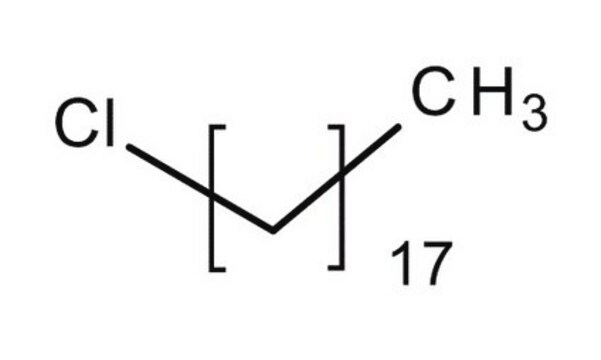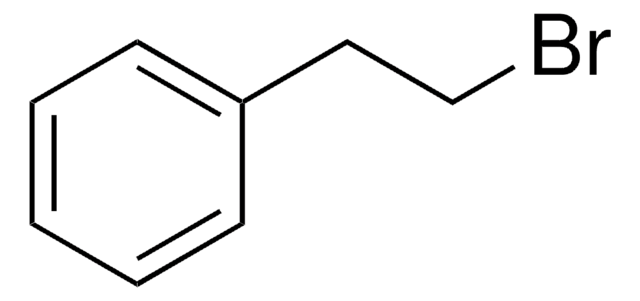238368
1-Chlorooctadecane
96%
Sinonimo/i:
Octadecyl chloride, Stearyl chloride
About This Item
Prodotti consigliati
Livello qualitativo
Saggio
96%
Stato
liquid
Indice di rifrazione
n20/D 1.451 (lit.)
P. ebollizione
157-158 °C/1.5 mmHg (lit.)
Densità
0.849 g/mL at 25 °C (lit.)
Gruppo funzionale
alkyl halide
chloro
Stringa SMILE
CCCCCCCCCCCCCCCCCCCl
InChI
1S/C18H37Cl/c1-2-3-4-5-6-7-8-9-10-11-12-13-14-15-16-17-18-19/h2-18H2,1H3
VUQPJRPDRDVQMN-UHFFFAOYSA-N
Cerchi prodotti simili? Visita Guida al confronto tra prodotti
Descrizione generale
Applicazioni
Avvertenze
Warning
Indicazioni di pericolo
Consigli di prudenza
Classi di pericolo
Aquatic Chronic 4 - Skin Irrit. 2
Codice della classe di stoccaggio
10 - Combustible liquids
Classe di pericolosità dell'acqua (WGK)
WGK 1
Punto d’infiammabilità (°F)
230.0 °F - closed cup
Punto d’infiammabilità (°C)
110 °C - closed cup
Dispositivi di protezione individuale
dust mask type N95 (US), Eyeshields, Gloves
Scegli una delle versioni più recenti:
Possiedi già questo prodotto?
I documenti relativi ai prodotti acquistati recentemente sono disponibili nell’Archivio dei documenti.
I clienti hanno visto anche
Il team dei nostri ricercatori vanta grande esperienza in tutte le aree della ricerca quali Life Science, scienza dei materiali, sintesi chimica, cromatografia, discipline analitiche, ecc..
Contatta l'Assistenza Tecnica.











